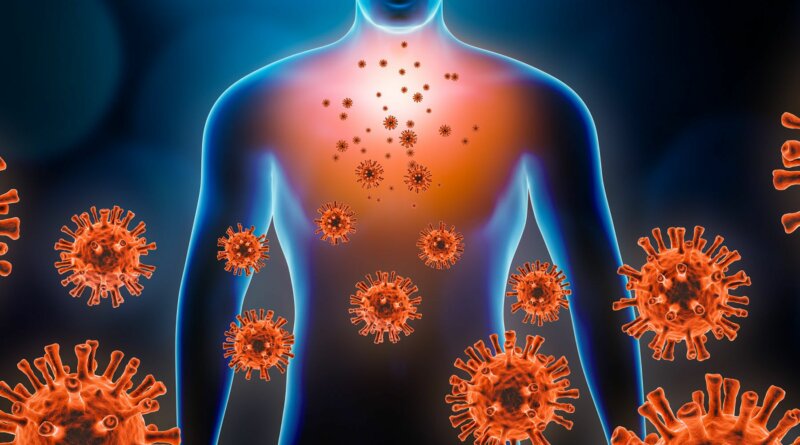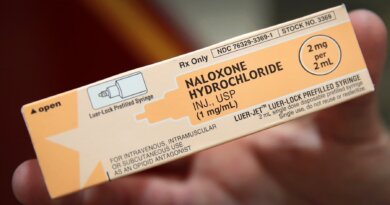Other Viruses Offer Hints Toward the Mystery of Long COVID
Aug. 18, 2022 – Researchers are chasing a range of potential culprits in the race to find the causes of long COVID. Some things they agree on: There will be a number of different causes, and the symptoms will vary wildly from case to case.
The two leading theories: The persistence of the coronavirus that causes COVID-19, and an overactive immune response.
There’s evidence the SARS-CoV-2 virus – or at least pieces of it – can hide out and linger in the body, and it’s possible this is feeding an ongoing, over-the-top immune reaction.
Other viruses are known to do this. Epstein-Barr virus is seen as the cause of most cases of multiple sclerosis. Chronic fatigue syndrome, long a medical mystery, has also been linked to viral infections.
With a fired-up immune system meeting up with a lingering virus, the causes of long COVID promise to be as numerous as the range of symptoms it produces – 62, according to a recent U.K. study.
Long COVID is a syndrome – a cluster of symptoms that can be driven by different things in different people – says Michael VanElzakker, PhD, of the Division of Neurotherapeutics at Massachusetts General Brigham Hospital in Boston.
“So, it doesn’t have to be one cause, one symptom, one diagnosis, one treatment,” he says. “It’s a convergence of mechanisms that can drive subjective symptoms in different ways in different people.”
VanElzakker teamed up with microbiologist Amy Proal, PhD, to create the PolyBio Research Foundation in Washington state. It focuses on complex chronic inflammatory diseases like myalgic encephalomyelitis/chronic fatigue syndrome (ME/CFS). They have been looking at long COVID, also.
Writing in June in the journal Frontiers in Microbiology, they say long COVID is often described as unusual or mysterious, but it shouldn’t be. It can take months or years for a person to clear the Ebola virus, for example. Other syndromes that may be sparked by viruses, like ME/CFS, have been connected to long-term health effects and produce symptoms matching long COVID.
VanElzakker thinks persistent virus plays a key role, but he says skeptics argue that tests that find pieces of genetic material known as RNA are just finding harmless remnants. Researchers are going to have to use multiple methods to show that actual leftover virus can be a cause, he says.
“Which is fair,” he says. “Bold claims require lots of evidence.”
While a patient may test negative for COVID, those bits of virus may be lurking in other organs or systems. At the same time, they may also cause your immune system to signal a false alarm response. Data suggests the immune system may be overresponding to residual virus.
Akiko Iwasaki, PhD, of the Department of Immunobiology at the Yale School of Medicine, and colleagues found evidence the immune systems of long COVID patients are reacting to something.
In a preprint study that has not yet been peer-reviewed, they reported they found evidence that COVID-19 infection had reactivated herpes viruses – Epstein-Barr virus and varicella-zoster virus, which causes chickenpox and shingles. These herpes viruses never leave the body, and Iwasaki’s team found evidence the immune systems of long COVID patients might be responding to these reactivated viruses.
They also found evidence of exhausted immune cells known as T cells, and found that the single most obvious difference in the blood of long COVID patients versus people who didn’t have long COVID was the level of the stress hormone cortisol.
Cortisol levels “alone were the most significant predictor for long COVID classification,” they wrote.
Attacking Lung Cells
At the University of North Carolina School of Medicine in Chapel Hill, researchers have been looking at the lungs of mice after they clear the virus to find out what is driving the disease.
A team including Richard Boucher, MD, director of UNC’s Marsico Lung Institute, looked at mice between 15 and 120 days after the virus had cleared and found it had infected cells deep in the lung. These cells have two key roles: they lubricate lungs and exchange oxygen for carbon dioxide.
“So, you get a double hit early on,” he says. “You don’t have enough of these cells, so they don’t produce the lubricant that you need. Your lungs can get stiff, and it gets very difficult to breathe.”
The immune system is then triggered to help clean up the viral infection. In the mice, it stayed activated for up to 4 months, their research found. “That’s probably the majority of what goes on in the lung with people post-COVID, and that will show up as shadows on a CT scan,” Boucher says.
But he and others suspect the immune response to COVID-19 can trigger processes similar to those seen in the early stages of pulmonary fibrosis, a progressive scarring of the lung.
“You have a lot of extra immune cells in the lung that shouldn’t have been there, and the immune cells began to put down fibrous tissue, or scar, because they couldn’t repair things,” Boucher says.
His team treated the mice with nintedanib, a relatively new drug for idiopathic pulmonary fibrosis, and it appears to help, Boucher says. The FDA approved the drug in 2020 to treat chronic fibrosing (scarring), one of the first treatments for the condition.
In earlier work, Iwasaki and colleagues, including epidemiologist Mady Hornig, MD, of Columbia University, also looked at unexplained post-infection syndromes.
“Certain acute infections have long been associated with an unexplained chronic disability in a minority of patients,” they write in Nature Medicine. “These post-acute infection syndromes represent a substantial health care burden, but there is a lack of understanding of the underlying mechanisms, representing a significant blind spot in the field of medicine.”
That may be changing with research into long COVID, Hornig says. “The pandemic is one of those turning points,” she says.
The sheer number of patients and the chance to monitor them will offer answers about these syndromes, she says. “We have at least some acknowledgment that there is the possibility of a range of disabling features that can affect a wide range of organ systems,” she says.
What remains unknown, Hornig says, is the degree to which specific pathogens create critical differences in the individual’s persistent symptoms.
For example, she believes that ME/CFS has multiple causes, and she has been investigating the things that may be at play. While about 75% of patients with ME/CFS report a triggering infection, the rest do not.
Another theory is that small blood clots – blood clots are a hallmark of severe COVID-19 infection – might be the root of some of the symptoms of long COVID.
VanElzakker from Mass General Brigham says research into that theory still needs to be repeated, but he would be surprised if the blood clots were not involved.
For now, at long COVID clinics nationwide, health care professionals are treating the symptoms without waiting for proof of a cause. Research into exactly what triggers the cascade of events offers the hope of new treatments. Studies are underway worldwide. The Biden administration pledged support for expanded research in April.





by cialis tablets in frankfurt pharmacy: do you have to take cialis everyday best deals on cialis super active plus online
can i purchase sildalist without prescription